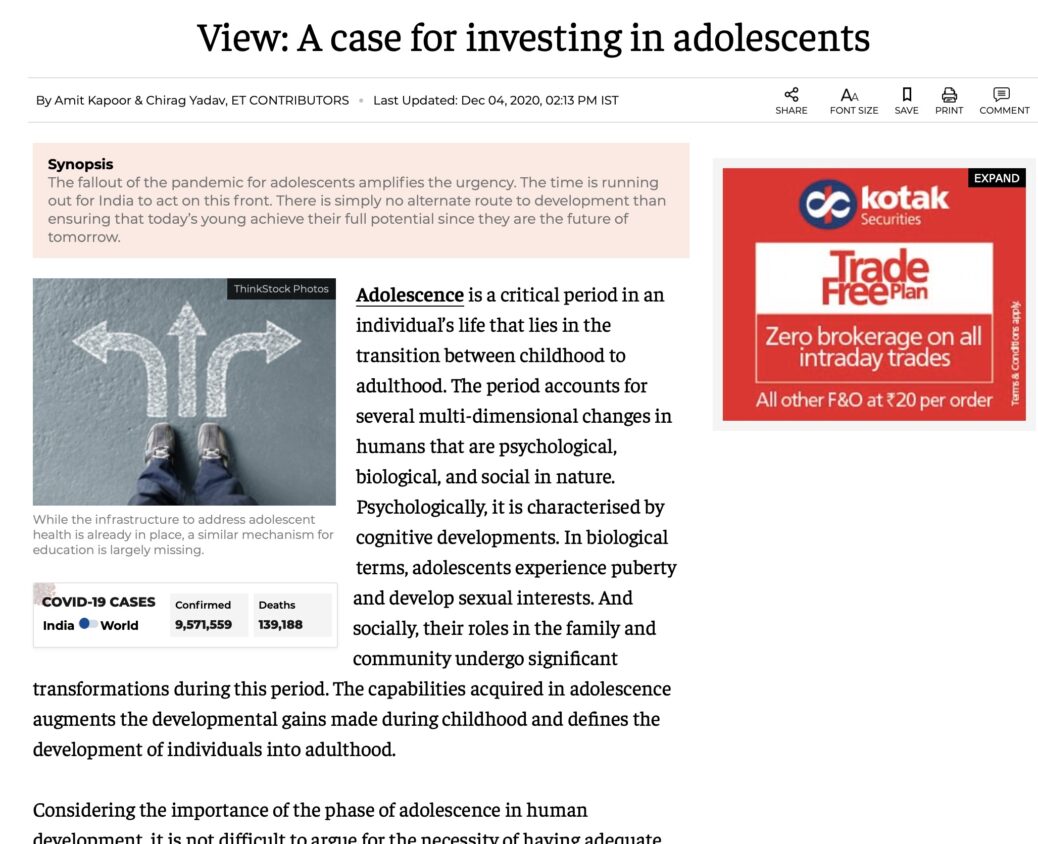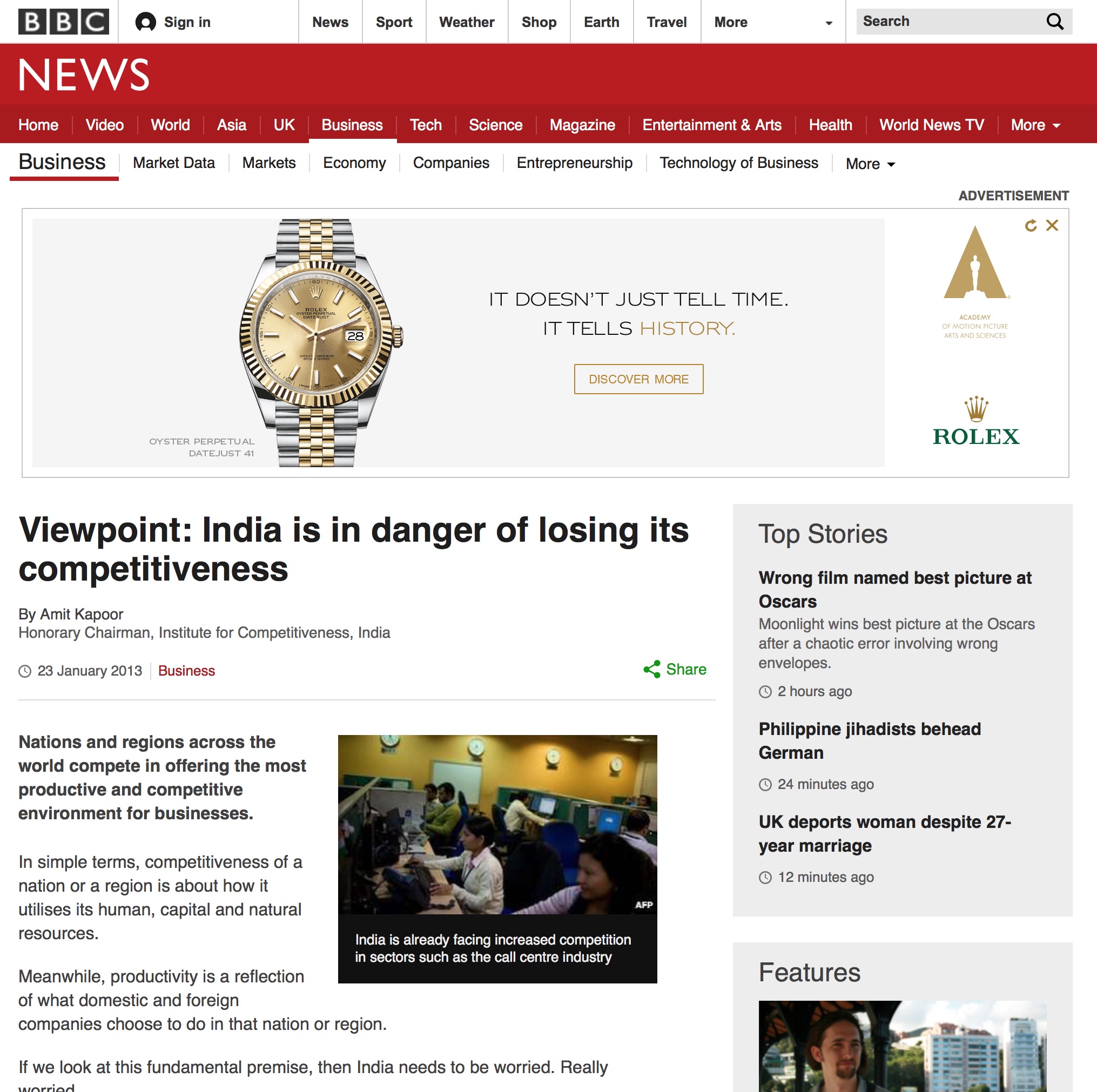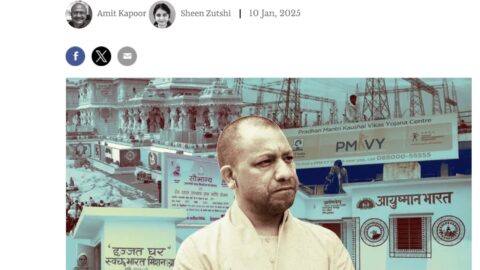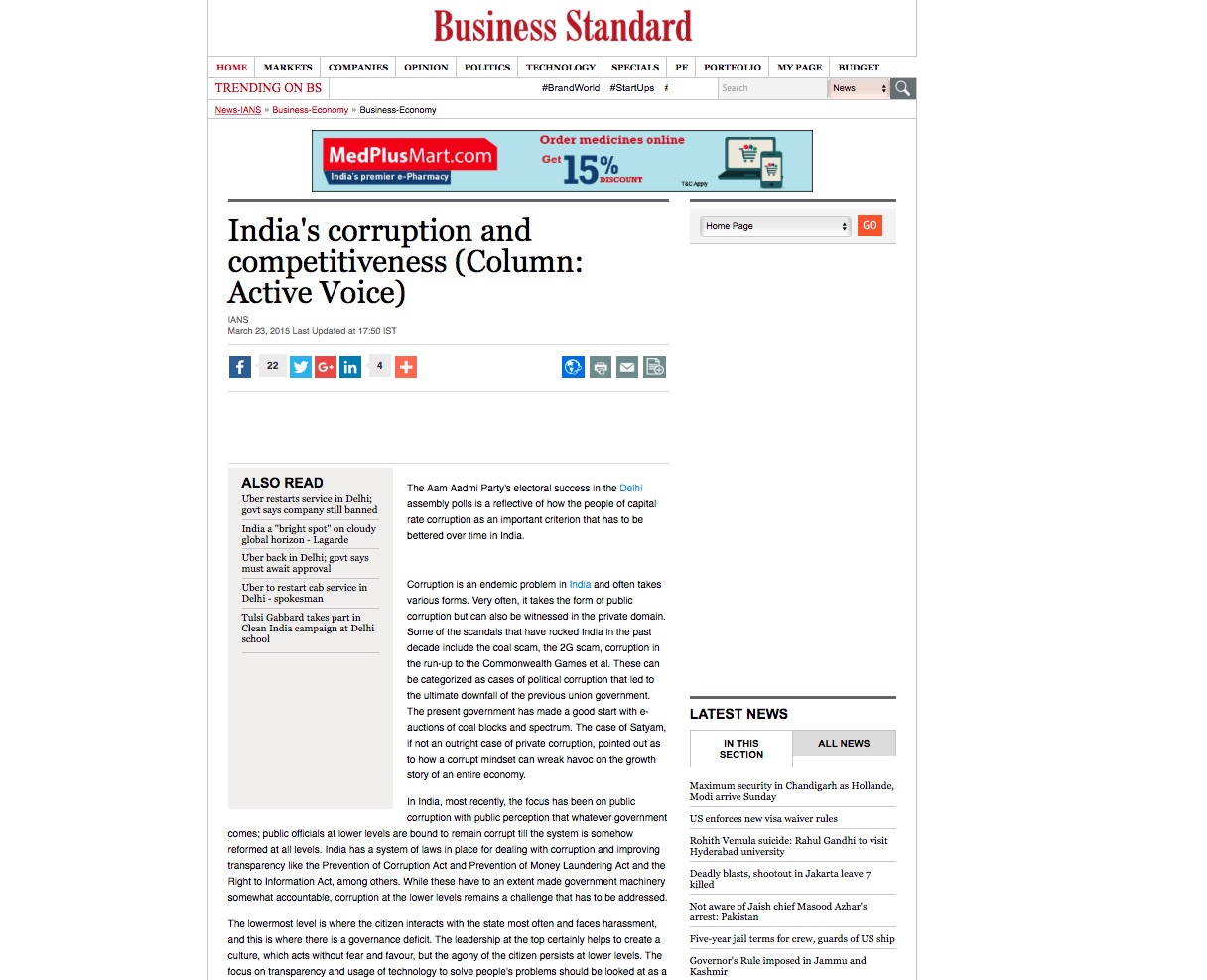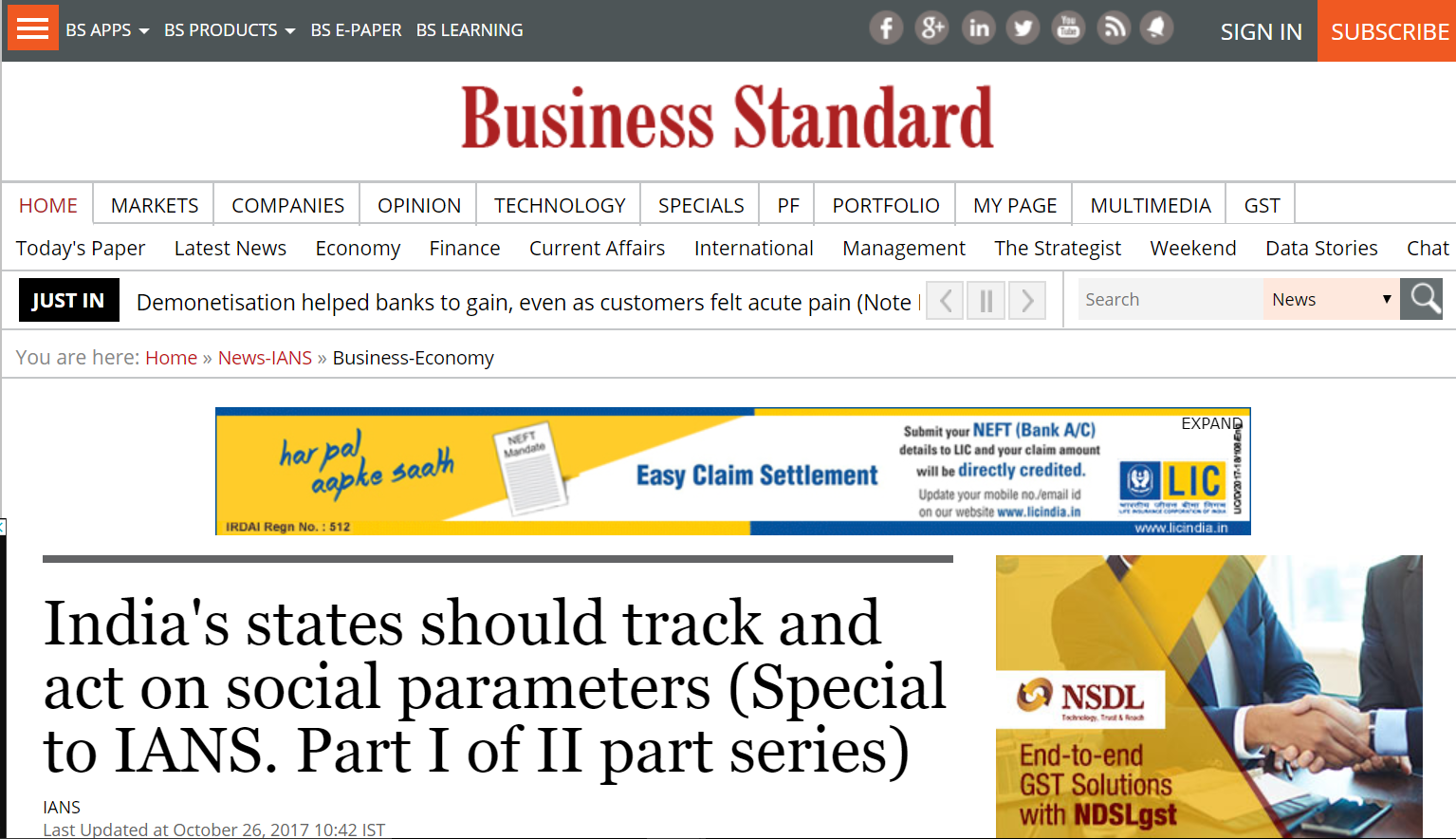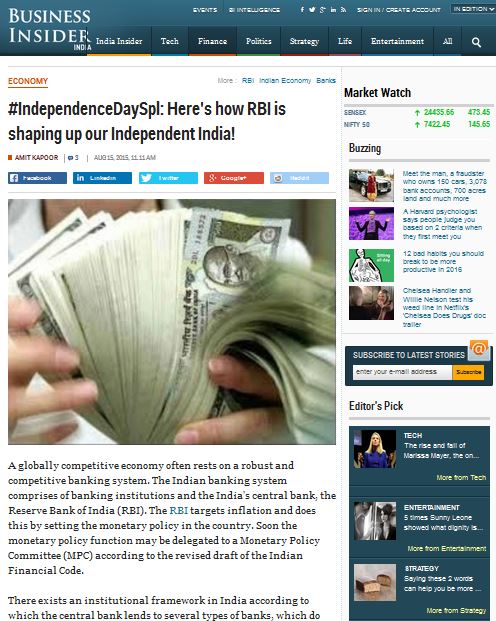A Case for Investing in Adolescents
The fallout of the pandemic for adolescents amplifies the urgency. The time is running out for India to act on this front. There is simply no alternate route to development than ensuring that today’s young achieve their full potential since they are the future of tomorrow.
Adolescence is a critical period in an individual’s life that lies in the transition between childhood to adulthood. The period accounts for several multi-dimensional changes in humans that are psychological, biological, and social in nature. Psychologically, it is characterised by cognitive developments. In biological terms, adolescents experience puberty and develop sexual interests. And socially, their roles in the family and community undergo significant transformations during this period. The capabilities acquired in adolescence augments the developmental gains made during childhood and defines the development of individuals into adulthood.
Considering the importance of the phase of adolescence in human development, it is not difficult to argue for the necessity of having adequate policy focus on this demography. And yet, adolescents and young adults have been largely overlooked in global health and social policy. The evidence for this oversight can be found in several studies, which show that they have had the lowest health gains from economic development when compared to other age groups.
There are 1.2 billion adolescents in the world that account for around 16 percent of the global population. About every fifth adolescent lives in India, and every fifth person in India is an adolescent. So, the necessity to focus on their welfare for the country cannot be overstated. The country’s future development trajectory is inextricably tied to the wellbeing of today’s adolescents since it is the key determinant of their transition into adulthood. The same could be said about global development given India’s share in the world’s adolescent population.
However, enabling adolescent development is a complex challenge. The nature of the demography requires multiple cross-sections of needs to be addressed across and within different sub-groups of adolescents. For instance, on a broad level, the early adolescent years (10 – 14 years) are marked by requirements for good schooling and health while in the late adolescent years (15 – 19 years), work opportunities become more pertinent for a significant proportion of adolescents. Meanwhile, some adolescents in the latter group are concerned with issues of higher education. Then there are issues of marriage and sexual health that are more focussed on late adolescence as well. Further, these issues vary based on gender, economic status, and caste of individuals.
India’s performance on these issues shows immense scope for improvement. In education, for instance, about 17 percent adolescents drop out before completing secondary education as per the data provided by the Ministry of Human Resource Development. This figure rises to 19 percent for Scheduled Castes and over 24.5 percent for Scheduled Tribes. When it comes to higher education, the enrolment rate of Indian adolescents drops to 25 percent, which is much behind countries like China (43 percent) and US (85.8 percent).
With respect to health, the Lancet Commission on Adolescent Health and Wellbeing classifies India as a ‘multi-burden country’, which implies that it is characterised by high levels of all types of adolescent health problems. These include non-communicable diseases, diseases of poverty (undernutrition, sexual diseases, and other infectious diseases), and injury and violence. A recent study that analysed 34 years of global data on the body mass index (BMI) of adolescents across 200 countries placed India at the 196th place.
These statistics point to the need for a holistic policy framework that encompasses the diverse mix of adolescent development goals. A significant effort by the government has been towards addressing adolescent health through the Rashtriya Kishor Swasthya Karyakram (RKSK). The programme aims to ensure universal coverage of health information and services to all adolescents across the country through community-based interventions. It targets their nutrition, sexual and reproductive health, and substance abuse, among other health challenges. Although the programme is a step in the right direction, there are documented issues of weak service delivery due to low engagement of frontline workers. So, there is a need to improve the implementation of RKSK to make effective advances in adolescent health.
While the infrastructure to address adolescent health is already in place – albeit with some challenges and scope for improvement – a similar mechanism for education is largely missing. The necessity to tackle challenges in education for adolescents has become even more pertinent with the onset of COVID-19. As education has shifted online due to the pandemic, the digital divide across the country has affected access to education, especially to the vulnerable sections of society. Specifically, as per NSSO data, only one in ten households has access to computer facilities and one in four homes has access to internet. These challenges will also worsen the mental health of children in this demographic segment.
There are several strong arguments for investing in adolescents – from ensuring human welfare to enabling the demographic dividend – but the fallout of the pandemic for adolescents amplifies the urgency. The time is running out for India to act on this front. There is simply no alternate route to development than ensuring that today’s young achieve their full potential since they are the future of tomorrow.
The article was published with Economic Times on December 4, 2020.

